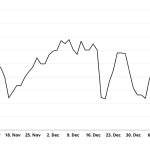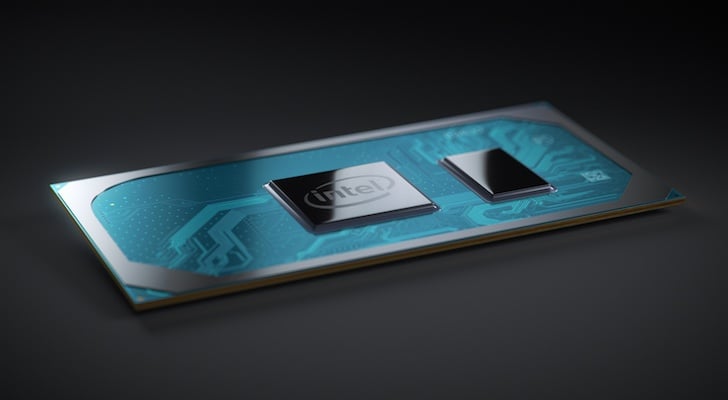
Hello, Reader.
Tom Yeung here with today’s Smart Money.
In 2007, Advanced Micro Devices Inc. (AMD) CEO Hector Ruiz knew his firm was in trouble. Though he had saved AMD from the dot-com burst, the industry veteran simply could not make the company profitable.
The problem was AMD’s manufacturing business – a capital-intensive segment that sucked up cash like a vacuum cleaner. No matter how much money AMD made from its lucrative chip designing business, it would all disappear into building its advanced fabrication plants (“fabs”).
“The expenses for a leading edge fab were doubling every two or three years,” one senior AMD executive said at the time. “And right now we’re looking at investments of campuses upward of $100 billion.”
The 2007-2009 financial crisis only made the company’s financing situation worse.
The answer was a stroke of genius. In 2008, Ruiz announced he would split his company in half. The “good” chip designing unit would start operating under the AMD name, and the “bad” fab business would become its own entity, GlobalFoundries Inc. (GFS).
The result was nothing short of remarkable. Freed from the financial (and physical) limitations of its fabs, the “good” AMD began working on advanced designs that would eventually end up in major gaming platforms like the PlayStation 4 and Xbox One.
Shares of AMD have surged 4,100% since its split in 2009, and AMD has evolved from a second-tier player to a leading chip supplier.
Surprisingly, the “bad” GlobalFoundries was also successful. The fab-focused company no longer needed to pour billions into cutting-edge plants for AMD, so it focused on making cheaper, older chips at a discount. GlobalFoundries would see its valuation rise from an initial $1.5 billion to over $21 billion today – a 1,300% increase.
That’s why the situation at the chip designer and fab I want to talk about today is not as bad as it seems. In fact, its situation is eerily similar to that of AMD in 2007-’08… and that could spell good news for the company.
Here’s the story…
Building Our Case
First, let’s consider the bad news.
The fabrication plants of Intel Corp. (INTC) – once the envy of the world – have fallen behind. In February, Intel CEO Pat Gelsinger admitted that his firm would rely on Taiwan Semiconductor Manufacturing Co. Ltd. (TSM) to build its latest Intel Core Series.
This is reportedly the first time Intel has outsourced central processing unit (CPU) core production to an external fab.
At the same time, Intel’s design team has been forced to press ahead with next-generation designs that the company may never be able to produce in-house. The team knows that Intel’s designs cannot fall behind as well if the company wants to survive.
But there are some silver linings…
- Intel remains the dominant supplier of CPUs, shipping over two-thirds of the key processors in PCs, laptops, and servers.
- The Silicon Valley legend remains profitable; analysts expect the firm to make no less than $1 billion in profits this year before seeing that figure recover to $4.6 billion next year.
- And, perhaps most importantly, Intel remains one of the few American firms that could revitalize the country’s high-tech chipmaking industry – a fact not lost on either major political party.
Since 2000, the Santa Clara, California-based firm has received roughly $14.5 billion in government subsidies. Almost half came before 2015.
To paraphrase Eric…
If Intel doesn’t build domestic production capacity, who will?
In other words, Intel’s design business (the “good” Intel) and its fab segment (the “bad” Intel) both remain incredibly valuable.
That’s likely why.
Qualcomm Inc. (QCOM) approached Intel Corp. (INTC) about a potential takeover last week.
From The Wall Street Journal story…
A deal would significantly broaden Qualcomm’s horizons, complementing its mobile-phone chip business with chips from Intel that are ubiquitous in personal computers and servers.
Qualcomm and Intel have also sought to profit from the artificial-intelligence boom with the advent of AI features in phones and computers.
There’s a lot for companies like Qualcomm to love about Intel.
High-end chip designers like Qualcomm and Nvidia Corp. (NVDA) know they’re becoming overly reliant on a single foreign supplier – Taiwan Semiconductor – and Intel is the only American company that can offer an alternative.
In addition, Intel owns half of the X86 processor duopoly with Advanced Micro Devices. AMD entered much of that business through a $49 billion acquisition of chip designer Xilinx in 2022, making Intel’s current $96 billion price tag seem cheap (considering the other assets Intel also controls).
Private equity is also getting interested in Intel at current valuations. On Sunday, Bloomberg reported that Apollo Global Management Inc. (APO) is considering a cash injection…
The alternative asset manager has indicated in recent days that it would be willing to make an equity-like investment in Intel of as much as $5 billion.
That’s excellent news for Intel. Again, to paraphrase Eric…
Intel is attempting the near-impossible with its plans to catch up with rivals. That makes its plans insanely expensive… So, everyone hates the stock.
That means these overtures are especially good news for Intel.
Over the next five years, Intel will need to spend over $100 billion in capital investment in the U.S. to leapfrog its manufacturing from last-gen 5-nanometer technologies to next-gen 2nm ones (assuming it stays a single company). It will need at least $20 billion (and up to $50 billion) of external cash to make that happen.
Will Intel Split Up?
So, what will Intel do next?
On the one hand, the legacy chipmaker might consider breaking itself into “good” and “bad” pieces as AMD did. Intel CEO Patrick Gelsinger already announced earlier this month that his firm would create a separate entity for its foundry business, the first step in separating the two entities.
On the other hand, Intel’s gamble on updating its factories could still pay off. They only need to keep up with two competitors (Taiwan Semiconductor and Samsung), and doing so could save the firm from getting strong-armed by suppliers. No chip designer wants to become 100% reliant on an outside manufacturer.
Intel’s path will now be determined by how much money it can raise from suitors like Qualcomm, what terms these funders will ask, and how well Intel’s gamble on next-gen 18A chip production will go.
Though the “bad” Intel will keep needing more cash, it might be worth keeping if the U.S. government and others are throwing money its way.
In the meantime, then, we continue to see potential in Intel for three reasons…
- Potential for a bidding war. Competing offers are almost always positive for the acquisition target because bidders tend to get excited and overpay. Bausch + Lomb Corp. (BLCO), for instance, surged 30% this month after six private equity firms began voicing interest in a buyout.
- Buying the rumor. Studies have long shown that markets indeed “buy the rumor,” where stocks tend to rise after potential deals are floated or rumored. One French study found shares peaking 50 days after the dissemination of the rumors in the media.
- Retail investors are buying. Retail ownership has surged 25% in the past two weeks, according to data gathering firm Fintel.io.
That means the former Silicon Valley darling has finally become too cheap to ignore.
Intel still runs a world-class processor designing unit, and it has ambitious plans to revitalize its high-end chip fab business. If it succeeds, people will look back at what will become a trillion-dollar firm and ask, “Why didn’t I buy in at $20 a share?”
Of course, there’s no guarantee that Intel – or any stock – will succeed.
So, if you buy shares of INTC – or of any stock – you need to have a solid exit strategy in place for when the next major sell-off occurs. Something based on math and data, not emotion.
Which is why I want to direct your attention to a discussion that Eric had the other night.
He sat down with a special guest who revealed a powerful tool that could help you determine an optimal time to sell your stocks before the next big crash occurs.
You can watch their video conversation now.
We’ve secured a 90-day trial to for you, but you need to act before September 30.
Regards,
Thomas Yeung
Markets Analyst, InvestorPlace





